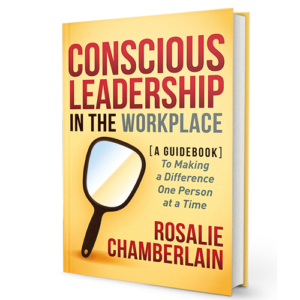For a long time, the discussion of bias was somewhat taboo and I had clients who preferred not to include this discussion in my diversity and inclusion programs. It was okay if I mentioned bias, but that was sufficient and a deeper discussion or presentation was not to be on the agenda at that time.
The tide is changing.
I now have calls specifically for consulting and programs on understanding bias, both from current and from prospective clients. Often, they want to take the discussion deeper and gain greater insight into how it shows up in their organization and in themselves. One compelling force creating change and developing interest is the fact that there is disparity in gender, racial and LGBT diversity in leadership, and if an organization truly wants to be an employer of choice and a great place to work, attracting top talent, then it is imperative that a deeper look at practices and procedures is implemented. It requires examining how bias shows up in the hiring, review, evaluation, development, advancement and retention processes?
Another propelling force that has set in motion a strong desire to explore bias are the recent reports in the news on incidents involving racial tensions. These events drive a need to develop stronger awareness and explore these issues. When tragic incidents involving race and law enforcement happen, discussion can often become a debate. People begin taking sides. I offer for you as you hear or read about reports on incidents to look at your reaction. Do you automatically take sides, believing all that you read or heard or saw? I suggest this action, not to bring about a decision as to who is right and who is wrong, but rather to stop to see if you are perpetuating a particular stereotype or bias.
While some of this momentum for change has come from concern about large scale national and international occurrences, as well as from organizational goals to become more diverse and inclusive, continued change also applies to you, the individual. On a day-to-day basis it is important to bring awareness to your reactions and thoughts and how they impact your community and world view. When you begin to bring your own unconscious biases to the surface and notice a preconceived judgment that has not been thought out thoroughly, or that came from a learned experience or someone else’s opinion, what do you do with it? Do you agree, accept it as truth and move on as usual? If this is the case, what can be the impact of this small, seemingly normal action? It can be huge.
If you are a leader and you accept someone else’s judgment of a person without careful thought, experience or facts rather than opinions, this can have a tremendous impact on that person’s career and potentially the organization. If you are someone who is building and leading your career and you accept another’s opinion about a leader or the organization that sets off a tendency in you to hold back and not excel because of a comment or feeling perceived as disempowering, watch out for this. If it threatens to stifle your motivation, think it through! You would be well served to not let your performance excellence be squashed by another’s experience or belief. Take charge of your career and explore your own biases.
One leader told me that one of the greatest Ah Ha moments he has had was understanding the hidden nature of unconscious bias and that once he began to explore and welcome the insight, he began to see how subtle and deceptively hidden it was. He noticed that underneath his conscious awareness, there would be an event that brought about an image, followed by an immediate reaction, and that his subsequent actions were influenced or impacted based on that habitual response. He shared that he looks at focusing on his thought, examining it, and thus making choices as to the behavior and actions he wants to implement.
Take My Quiz: Are You Biased? Answer these 8 Questions to discover the message you send.
This is an excerpt from my book.
Conscious Leadership in the Workplace: A Guidebook to Making a Difference One Person at a Time
Conscious Leadership in the Workplace takes the discussion of inclusive and dynamic leadership to the next level with powerful tools and exercises that help you create an environment where everyone has the opportunity to contribute and succeed.








